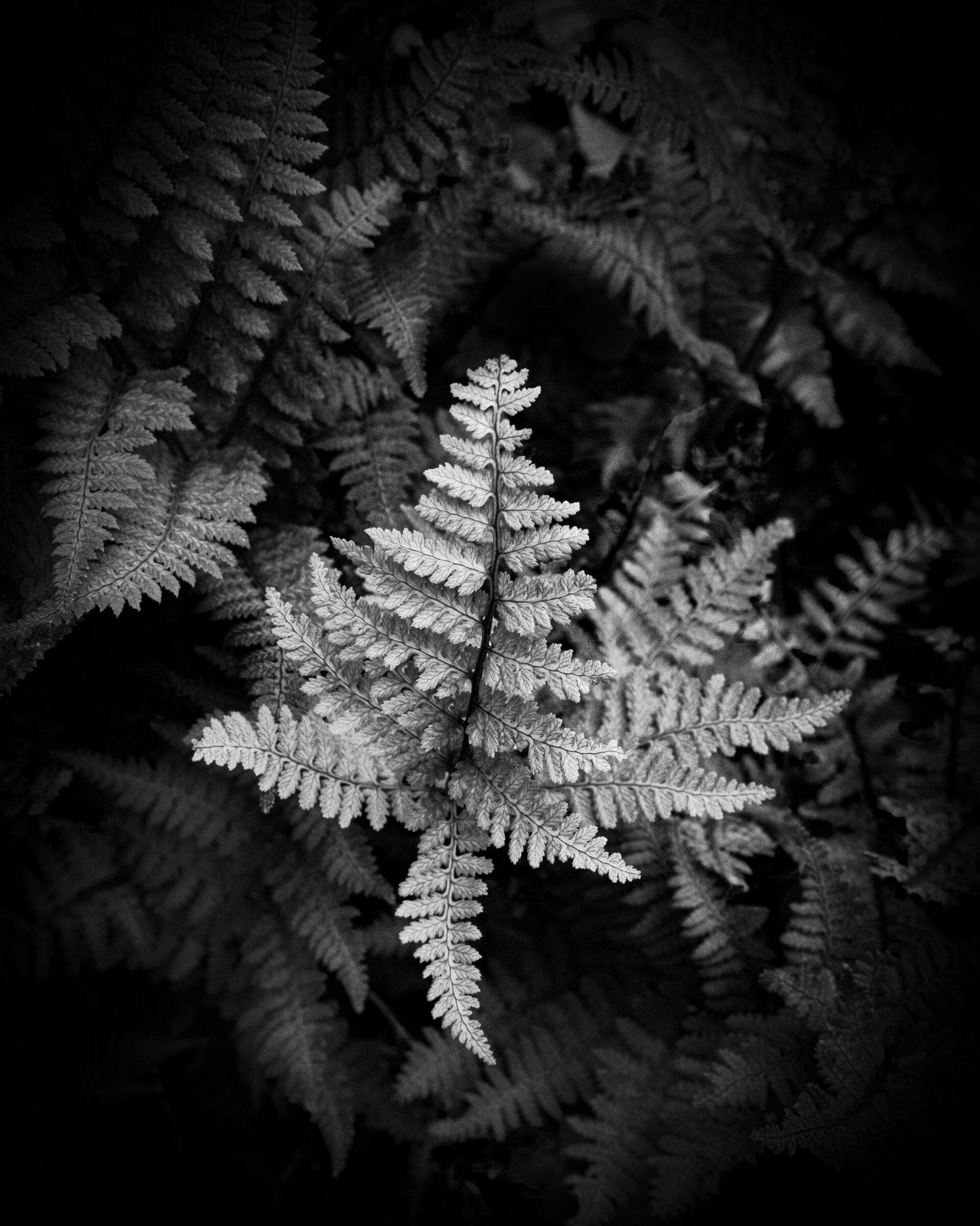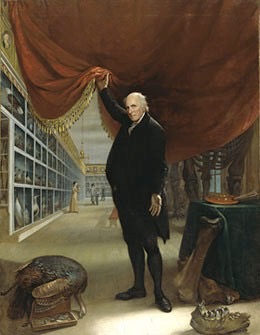
Nature creates similarities. One need only think of mimicry. The highest capacity for producing similarities, however, is man’s. His gift of seeing resemblances is nothing other than a rudiment of the powerful compulsion in former times to become and behave like something else. Perhaps there is none of his higher functions in which his mimetic faculty does not play a decisive role.
- Walter Benjamin, “On the Mimetic Faculty” 1933
I am drawn towards photographing ferns whenever possible. In fact I keep three different species of ferns in my garden at home. I made this photograph while on a two week motorcycle trip down the California coast. I stopped in the Redwood forest and took a hike.
On another day I rode deep into the forest near the Lost Coast Highway to find a wall of ferns. The road into the hike was rough and I had to cross a small stream to get there. Jurassic Park filmed scenes in this location so I knew I wasn’t off the map but I did feel a sense of adventure as I nosed the bike down the bank into the water and climbed up the other side.
The complex fractal patterns found in primordial landscapes soothe me. Nature bathing is now a prescription doctors give to patience for stress and anxiety. It turns out that fractal patterns stimulate the brain to produce alpha waves that induce feelings of calm and peacefulness while increasing our capacity for creativity.
I don’t think I could ever draw a fern accurately enough. This is why I am a photographer. My photographs capture every detail of the plant and the image I make is as close to being in the forest as I can get. Even though I don’t live in the Redwoods, I can take the benefits of being there back home with me in the form of a photographic reproduction. This gets to the importance of representation that is dislocated from place and time. The photographic image can transcend time and space and bring us back to a moment of calm. Staring at the photograph has benefits similar to meditation.
Aristotle thought that all forms of representation ranging from literature, music, and art were necessary for learning and human development.

The painter Charles Wilson Peale, saw painting as being closely related to the idea of a natural history museum whereby specimens are collected, studied, and replicated through highly realistic painting.
One could not directly observe and understand the natural world where the flight of the hummingbird or the speed of a deer exceeds our ability to see in detail. Therefore, the killing, studying, and creation of art offered us an understanding of the natural world prior to the invention of high speed photography and slow motion filmmaking.

Peale’s self-‐portrait “The artist and his museum” illustrates the idea of the museum as being a “place of making as well as showing.” The artist studio is defined as being a place of study.
Prior to photography, artists tried to make perfect imitations, a style known as realism, to reveal the order of the universe. Artists incorporated the use of the optics in the form of the camera lucida that used mirrors and the camera obscura that utilized lenses to create hand painted images that neared life like detail. The use of these devices marked the beginning of the photographic image as the painters required bright contrasty light and moved towards linear perspective and an awareness of depth of field. In one painting by Vermeer you see a loaf of bread that has soft edges in an appearance similar to shallow depth of field in photographs.

Up until 1839 visual representation was primarily restricted to painting, which was charged with the responsibility, according to Charles Wilson Peale, “to display, by visible objects, the harmony of the universe.” Nature was perceived to be the source of eternal truth.
Essayist Susan Sontag wrote about the relationship between photography and painting in her seminal group of essays published in the book On Photography. In it she writes:
“While a painting, even one that meets photographic standards of resemblance, is never more than the stating of an interpretation, a photograph is never less than the registering of an emanation (light waves reflected by objects)– a material investigate of its subject in a way that no painting can be… Having a photograph of Shakespeare would be like having a nail from the True Cross.”
In 1839 Jacques Louis Daguerre and William Henry Fox Talbot almost simultaneously announced their inventions of a photographic reproduction process. Daguerreotypes were a mono-print process that yielded exceptional detail. Fox Talbot’s Calotype used a paper negative and positive system that more closely resembles more modern film photography where multiple images can be made from a single negative. One of Fox Talbot’s earliest calotype prints was a photogram of a Buckler’s Fern. Fox Talbot would go on to produce the first commercially published book of photographs titled Pencil of Nature in 1844.
Eventually Frederick Scott Archer’s Wet Plate Collodion Process would bring together the sharpness of a daguerreotype with the multiple print capabilities of the calotype with the use of glass plate negatives. The single shot glass plates would eventually be replaced with a flexible plastic roll film that could make multiple negatives before development.
With the development of photography, paintings grasp on realism was relinquished to the science of optics. Photography became the primary source for representation of the facts of the world.
Painters moved towards making visible the interior of our human experience via abstract representation which began with impressionism and a group of outcast artist who staged an exhibition of their work in the photography studio of none other than Jacques Louis Daguerre!
Photography would follow suit but I will save that conversation for another time.
Have a great day!
Ira
